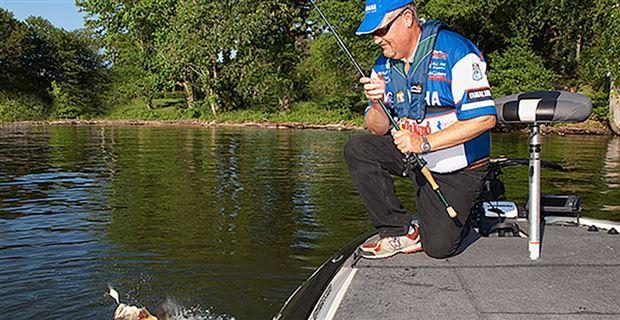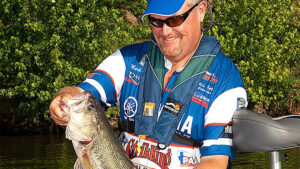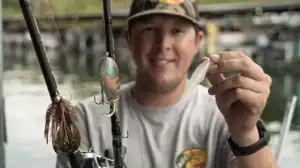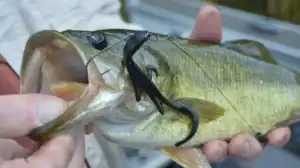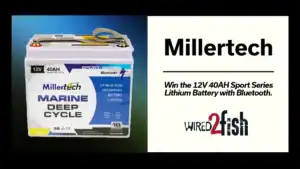Although it’s September and the bass are slowly making their way towards shallow creeks and bays, Mark Davis still has a deep diving crankbait rigged and ready to cast. For him, the deep cranking season will continue for at least another month.
“It’s been an extremely hot summer across much of the country and the water temperature in most lakes is still pretty warm,” Davis said. “So it seems as if both the bass and baitfish aren’t terribly anxious to begin their fall migrations. They’re going to remain in deeper water until the lakes start cooling and until they do, a deep crankbait will still be one of the most productive lures to use.”
Cranking depths between 10 and 18 feet is not particularly easy to master, but the three-time Angler of the Year and 1995 Bassmaster Classic champion began using the presentation more than three decades ago as a guide on Lake Ouachita. Today, he’s considered one of the best deep crankbait fishermen in the sport.
“There are some shortcuts I’ve learned over the years,” Davis said. “But it took me a long time to accept them. Probably the most important one is not to even start casting until you know what you’re fishing. About 90 percent of the time, deep cranking is about fishing some feature in deep water—such as a ridge, a hump or a channel—and you really can’t fish it effectively until you know what it looks like.
“I always idle slowly over the structure and study it with my electronics. Today’s depth finders and side-scan units will show you the shape of the structure, how big it may be and provide clues on how you can fish it most effectively.”
While the Yamaha pro studies the structure, he’s not always looking for bass. Instead, he concentrates on trying to identify some smaller, special spot on the structure that might attract and hold a school of fish. These sweet spots might be a sharp bend in a creek channel, a depth change on a ridge or a group of stumps on the edge of a point. Sometimes it may not be as large as a bass boat, but even that is large enough to attract big bass.
“One type of sweet spot I always try to locate is an area of hard bottom,” Davis said. “Which is particularly important on older lakes in which silt usually covers most of the bottom. A hard bottom can be rock, gravel, a shell bed or even just smooth clay, but it will show up very well on today’s electronics and isn’t hard to identify. When I find hard bottom like this, that’s what I’m going to fish.”
Initially, Davis keeps his lure choice as simple as possible, choosing either a shad or chartreuse-colored crankbait capable of diving deep enough to reach that hard bottom with a long cast and light, 10-pound line. If the hard bottom or cover is deeper than approximately 20 feet, he may use a presentation known as long-lining to get his crankbait 8 to 10 feet deeper.
“Boat positioning is also an important part of deep cranking,” Davis said. “I want to be as far away from my target as possible, but still get my lure down to that target. I’ll also experiment with casting angles, circling the spot to see if the bass want my lure coming from a certain direction. Most of the time, I’ll have my boat in deep water and cast shallow, but sometimes it’ll be just the opposite, and I’ll usually learn this by making a complete casting circle around the target. There is no way to tell what your best casting angle will be until you experiment like this.
“Deep cranking doesn’t have to be that difficult or that complicated, especially if you learn as much as you can about the structure before you start trying to fish it. In fact, with the quality of today’s electronics, deep cranking has probably never been easier.”
